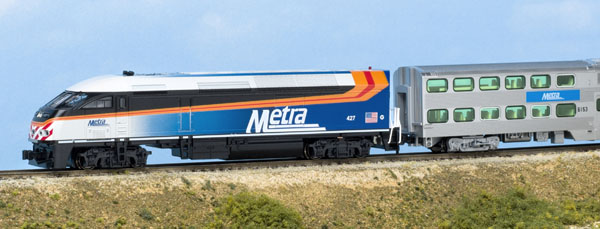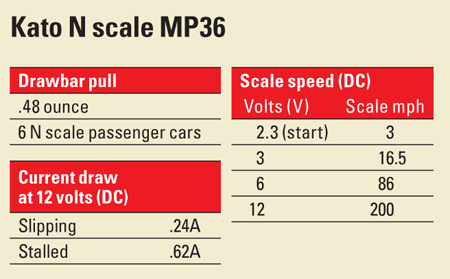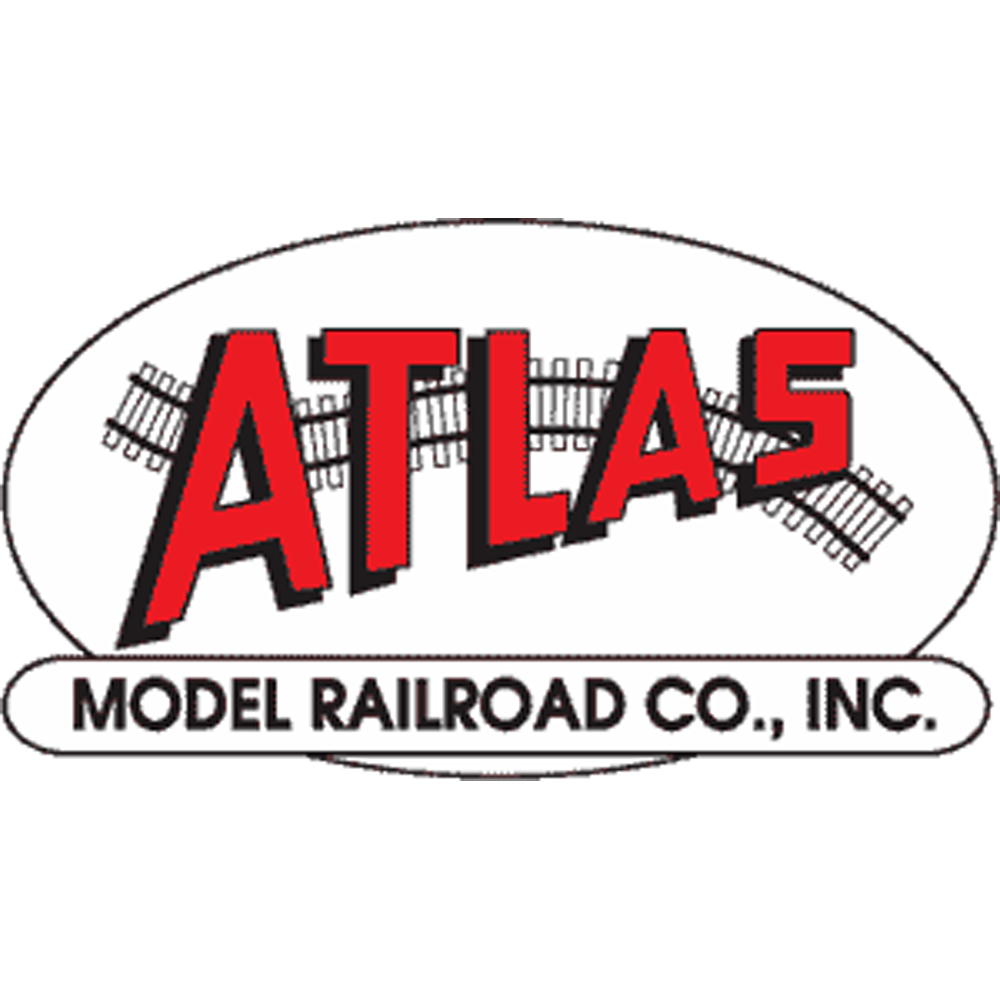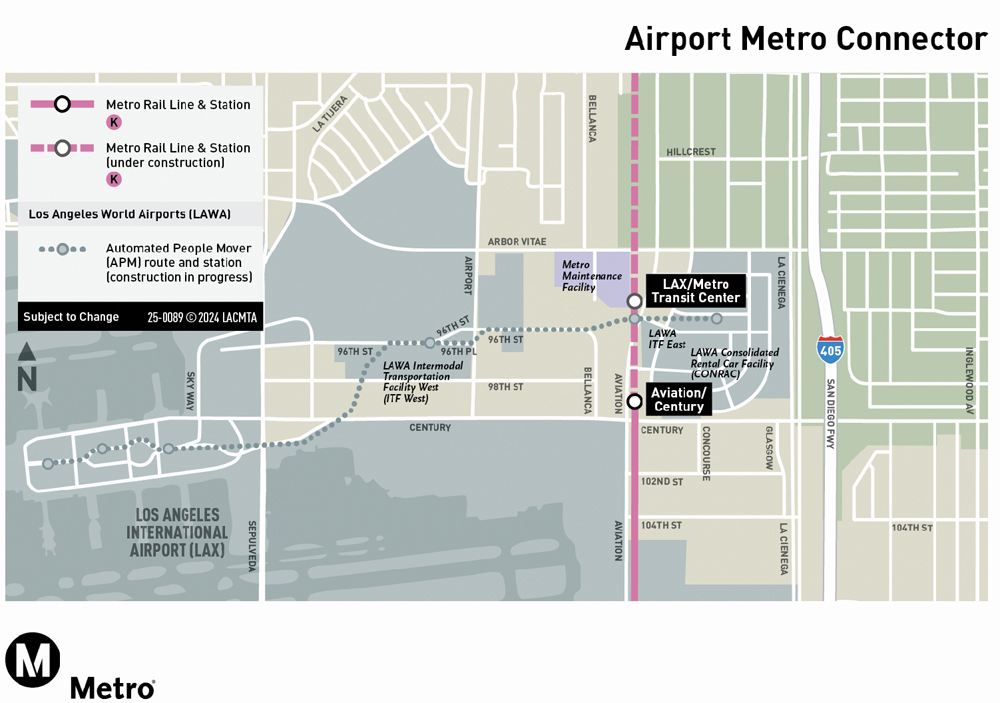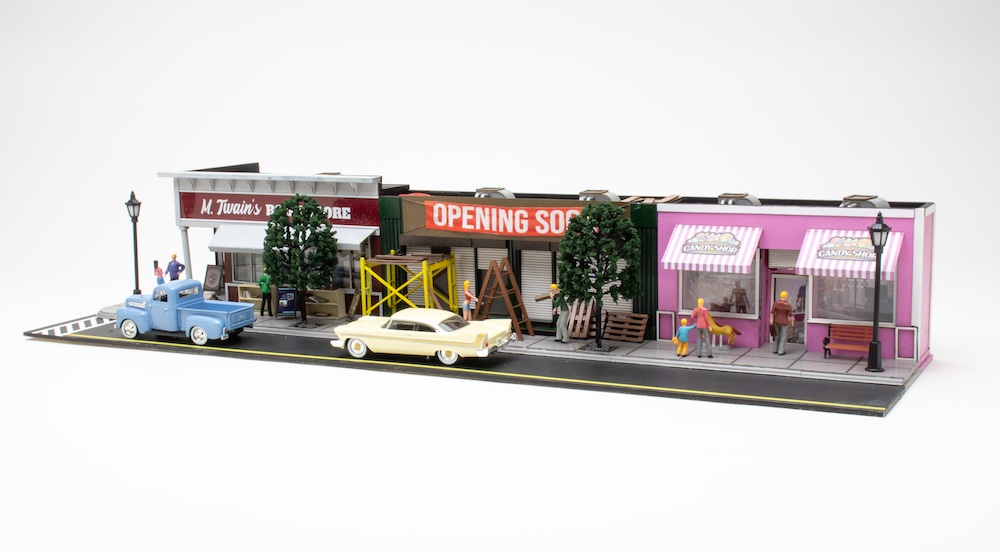New century, new equipment. Operated under the Illinois Rapid Transit Authority, Metra is one of the busiest commuter railroads in the United States. By 2000 Metra needed to replace some of its aging fleet of locomotives and cars, many of which were received secondhand from other railroads.
Between 2002 and 2005 Japanese railcar manufacturer Nippon-Sharyo delivered 192 bi-level coaches and 108 cab-coaches to Metra for push-pull operations. Each coach has a seating capacity of 145 passengers, while a cab-coach can seat 138. The cars are assigned throughout the Metra system.
In 2003 Metra received 27 new MP36PH-3S diesel-electric locomotives. The model number designates that the locomotive was built by MotivePower (MP), has a 3,600 hp engine (36), is designed for passenger service (P), has a head-end power alternator (H), has microprocessor controls (3), and a static inverter system (S). The locomotives are currently assigned to Metra’s BNSF, Milwaukee, and Rock Island Districts.
The MP36PH-3S is part of MotivePower’s MPXpress product line that includes other variations, such as the 4,000 hp MP40. MPXpress locomotives are used on several other commuter railroads including New Mexico’s Rail Runner and the Washington, D.C.-area Virginia Railway Express (VRE).
The dimensions of the Kato MP36 match prototype drawings in the March 2008 issue of Railroad Model Craftsman. I couldn’t find drawings for the cars, but the length, width, and height of the models match prototype specifications on the Nippon-Sharyo website.
The Kato MP36 accurately models the paint scheme of the Metra prototype. The separation between the colors is razor sharp. I was especially impressed by the gradient from gray to blue on the sides of the locomotive.
The molded handrails along the cab doors are painted the same colors as the body. The handrails would look better as separate parts, since then they could have been painted white to match the prototype Metra MP36.
The prototype coaches have regular windows surrounded by a black gasket and emergency windows that have removable metal frames. The Kato models match the prototype window arrangement except for the cab end of the cab-coach. The positions of the endmost emergency window and regular window on the lower level are opposite that of the prototype.
I used a hobby knife to carefully spread the sides of the body shell apart, so that I could lift it off the frame. I’ve ridden these cars many times, and the interior arrangement looks correct. The upper and lower interiors are molded separately. The window glazing has a greenish tint that’s similar to the tinting on the prototype’s windows.
The Kato MP36 has a mechanism that’s smooth and quiet at all speeds. The model’s top speed of 200 scale mph is quite a bit higher than the prototype, which could attain 108 mph. Metra coaches have a top speed limited to 79 mph, and the actual operating speed is usually much lower than that.
I ran the train around the 12″ curves of our N scale test layout without difficulty. The lights in the locomotive and cab coach didn’t flicker when the train negotiated the layout’s no. 6 turnouts.
Train Control Systems sells a six-function DCC decoder designed for the Kato MP36. For more information on the decoder, visit www.tcsdcc.com.
Lighting options. The prototypical lighting on the locomotive and cab coach are my favorite features of this set. The headlights and the marker lights on both the locomotive and cab coach operate according to the train’s direction. There’s a lighting on/off switch on the underframe of the cab coach.
The backup light and strobe light on the MP36 are non-operational. A TCS lighting kit (K4-LK) that adds these functions when used in conjunction with the K4D6 DCC decoder is available.
Kato sells interior lighting kits for the coaches that operate on DC or DCC layouts. Adding a Kato FR11 decoder to each car allows operators to turn the
interior lights on or off with a DCC throttle. The FR12 decoder is made specifically for the cab-coach and provides independent control of the headlights and markers when using DCC. See the Kato website for more information.
With the release of these accurately detailed models, Kato has made it easier than ever to model Metra commuter service in N scale.
For more N scale product reviews, track plans, and videos, visit the Model Railroader N scale page.
Manufacturer
Kato USA Inc.
100 Remington Rd.
Schaumburg, IL 60173
katousa.com
Era: 2003 to present
Road names: Chicago METRA, Virginia Railway Express (VRE)
Locomotive features
- All-wheel drive and electrical pickup
- Blackened metal wheels in gauge
- Body-mounted magnetic knuckle couplers at correct height (with modeler-installed trip pins)
- Five-pole skew-wound motor with dual brass flywheels
- Light-emitting diode (LED)headlights, marker lights, and number boards
- Weight: 4.5 ounces
Car features
- Blackened metal wheels in gauge
- Cab-coach has directional LED headlight and marker lights
- Truck-mounted magnetic knuckle couplers at correct height (with modeler-installed trip pins)
- Weight: 1.25 ounces (coach), 1.5 ounces (cab-coach). The cab-coach is .1 ounce too heavy and the coach is .15 ounce too light per National Model Railroad Association RP-20.1





